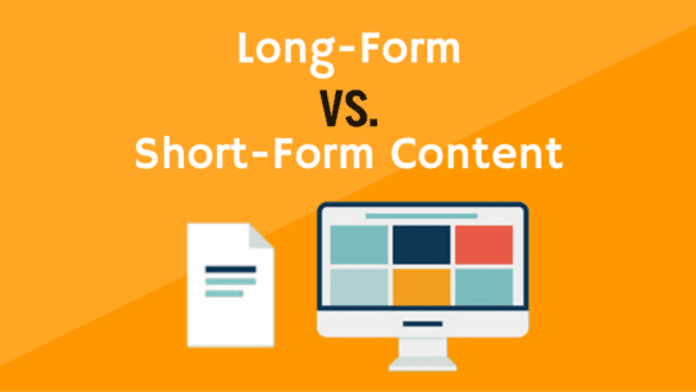In today’s digital age, content is king, and businesses of all sizes are racing to create compelling online material to engage their audience. However, a dilemma often faced by content creators and marketers is whether to opt for long-form or short-form content. Is it a case of “the longer, the better” or “short and sweet”? In reality, it’s a nuanced decision that depends on your brand’s unique goals, audience, and the story you want to tell.
The Art of Storytelling
Content, in any form, is essentially storytelling. It’s how brands communicate their message, values, and personality to the world. And like any great story, it needs to capture attention, maintain interest, and, ultimately, resonate with the audience. That’s where the long-form vs. short-form conundrum comes into play.
The Power of Short-Form Content
Short-form content is like a well-crafted haiku – concise and impactful. In today’s fast-paced world, where time is a precious commodity, short-form content reigns supreme. Social media platforms like Twitter, with its character limit, and Instagram, with its focus on visuals and brief captions, thrive on short content.
Short-form content is perfect for:
1. Quick Consumption: It’s easily digestible, ideal for capturing fleeting attention spans.
2. Brand Awareness: Memorable taglines, catchy slogans, and witty one-liners can make your brand stick in people’s minds.
3. Teasers and Previews: Offering a glimpse of what’s to come can generate excitement and anticipation.
The Allure of Long-Form Content
Long-form content, on the other hand, is more like a novel. It allows for in-depth exploration, detailed storytelling, and thorough information sharing. Blog posts, articles, whitepapers, and eBooks fall under this category.
Long-form content is beneficial when:
1. Expertise is Showcased: It’s an opportunity to demonstrate your authority and knowledge in your field.
2. Complex Topics are Discussed: Some subjects require a deep dive to provide valuable insights and understanding.
3. SEO and Authority Building: Search engines often favor longer, informative content, which can boost your website’s ranking.
Balancing Act
So, which one should you choose? The answer is both.
The real magic happens when you strike a balance between long-form and short-form content. Short-form content can act as teasers, directing your audience to the longer pieces where they can explore the subject in-depth. This approach ensures that you capture the widest audience, from the quick-scrollers to the detail-seekers.
Consider Your Audience
Your audience is the compass guiding your content strategy. Understanding their preferences is key. Short-form content can cater to the time-poor, while long-form content can engage those seeking in-depth information.
Whether you’re crafting a 280-character tweet or a 2,800-word blog post, remember that quality should never be compromised. Your content should add value, entertain, educate, or inspire. Irrespective of length, it should be engaging.
The long-form vs. short-form content debate is not a battle; it’s a symbiotic relationship. Like yin and yang, both have their place in the content ecosystem. The key is to understand when and how to utilize each to maximize your brand’s reach and impact. So, embrace both, and let your brand’s story unfold in captivating ways, short and long.





